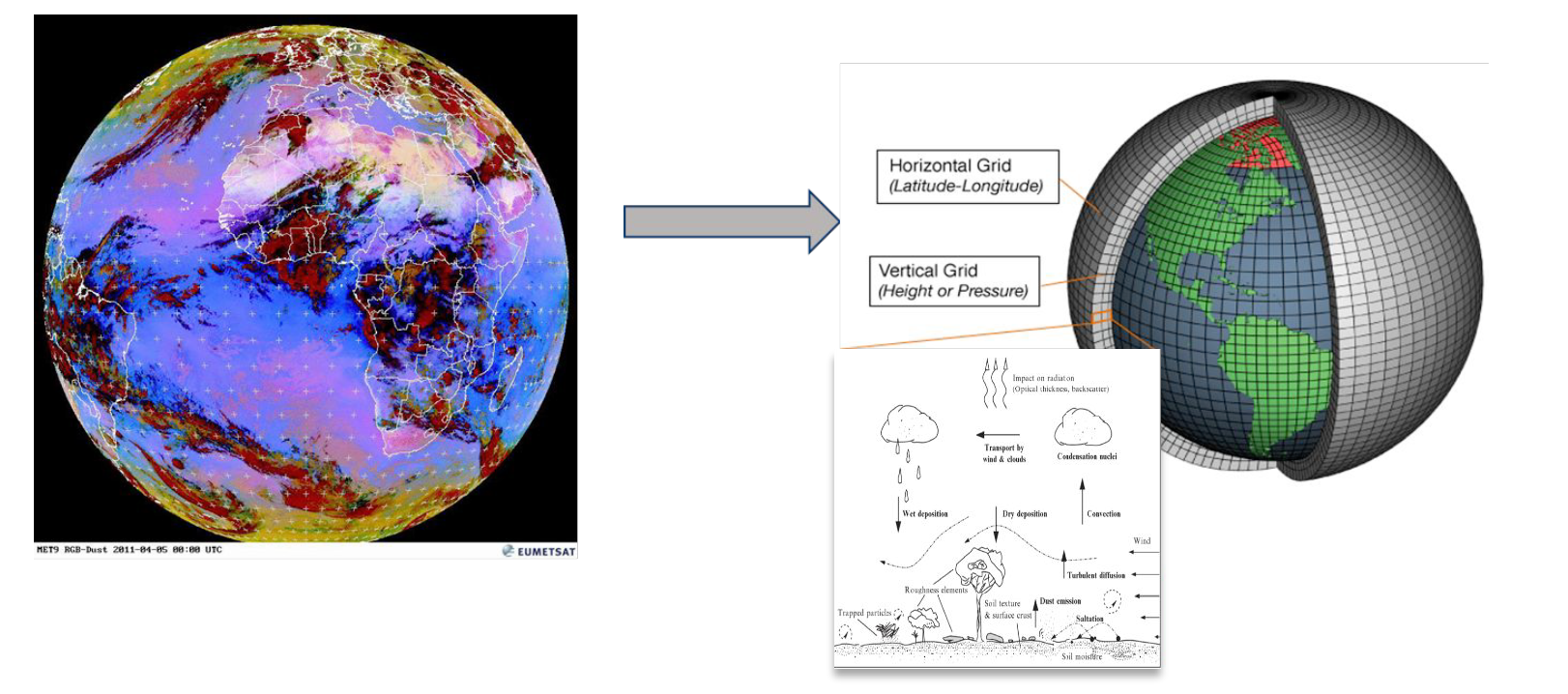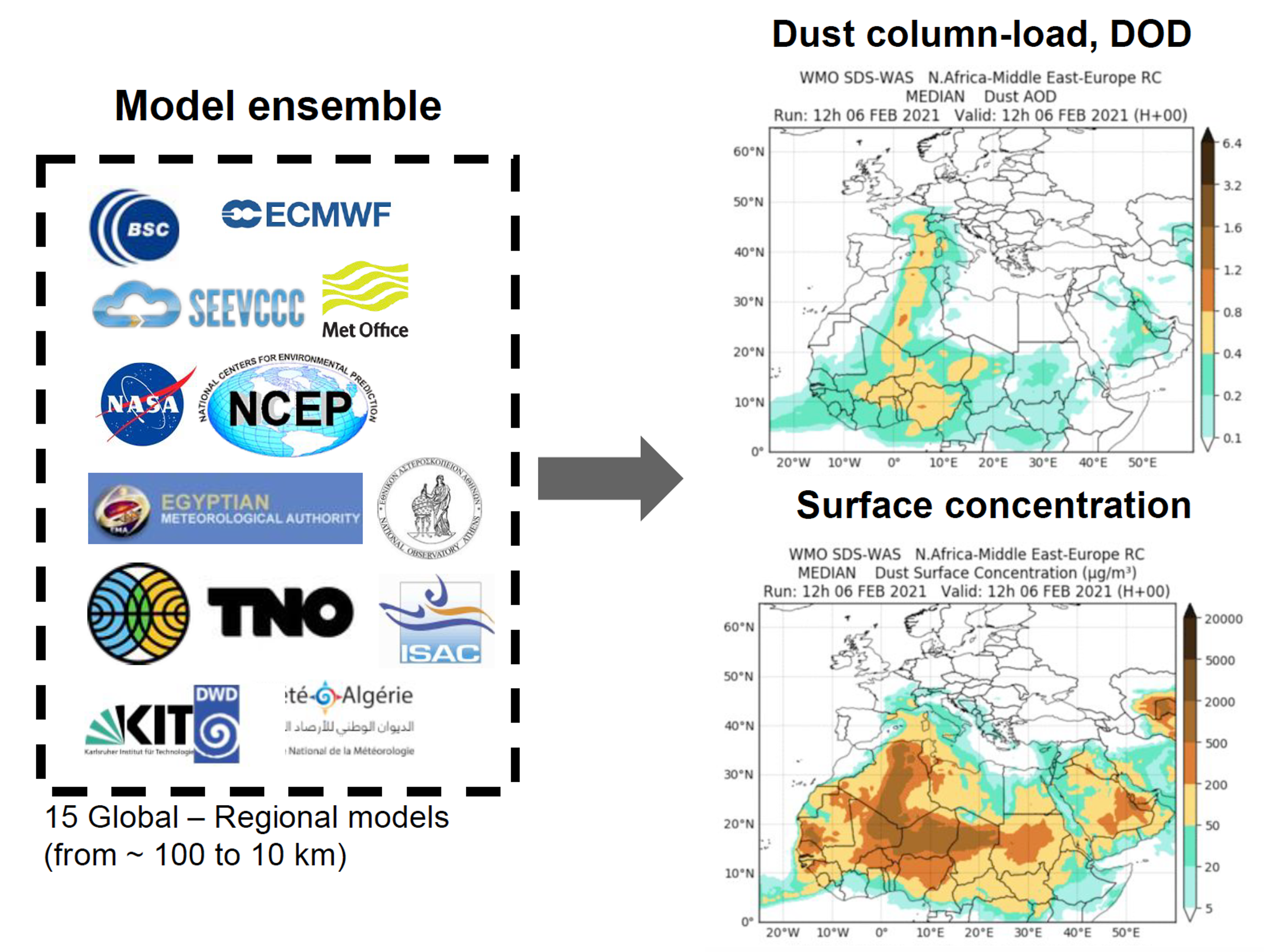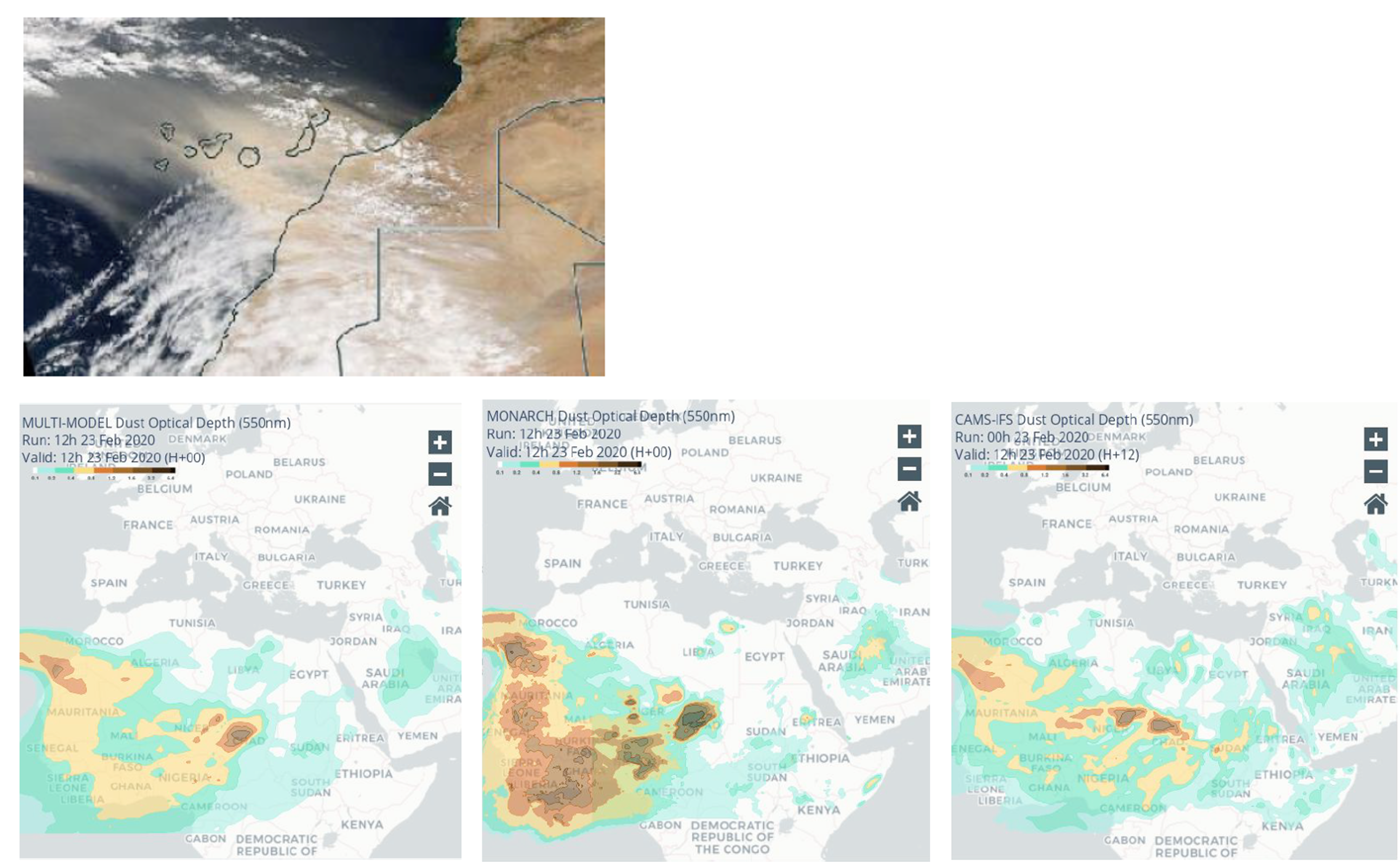Introduction to forecast models#
Dust forecasting models are a mathematical representation of the atmospheric dust cycle. Dust models represent aeolian desert dust, which results from wind uplifting processes. In modelling, the processes which are aimed to be reproduced in space and time have to be define. When a model is used, one has to be aware of the scale the model reproduces. For example, dust forecasting models do not take into account dust resuspension and other anthropogenic sources.
Dust transport is a global phenomenon. Even though dust processes span over five orders of magnitude in space and time, dust emission is a threshold phenomenon, which is sporadic and spatially heterogeneous and locally controlled on small spatial and temporal scales. An accurate representation of dust sources and sinks is critical for providing realistic magnitudes and patterns of atmospheric dust fields.
Dust forecast models help to:
complement dust-related observations, filling temporal and spatial gaps of measurements from observations
help us to understand the dust processes and their interaction with the climate and ecosystems and
predict the impact of dust on surface level concentrations.

Fig. 14 Dust models are a mathematical representation of the atmospheric dust cycle (Source: EUMETSAT MSG Seviri Dust RGB composite (left), Shao et al. (2014) (center) and Wikipedia (right))#
In this course, the following forecast products are introduced:
Global dust forecasts |
Regional dust forecasts |
|---|---|
Global dust forecasts#
CAMS global atmospheric composition forecasts
The Copernicus Atmosphere Monitoring Service (CAMS) produces global forecasts for atmospheric composition (including dust) twice a day (00 UTC and 12 UTC). The model provides 120-hours forecasts for more than 50 chemical species and seven different types of aerosols (including desert dust). For single-level parameters, the model offers hourly forecasts and for multi-level fields three-hourly predictions. The model has a spatial resolution of 0.4 x 0.4 degrees and a global horizontal coverage.
Regional dust forecasts#
WMO Barcelona Dust Regional Center
The WMO Barcelona Dust Regional Center is coordinating the activities of the WMO Sand and Dust Storm Warning Advisory and Assessment System (SDS-WAS) for North Africa, Middle East and Europe. The regional center conducts research and provides operational products on sand and dust forecasts for this specific region. It offers a wide range of dust products that serve the need for detailed dust information on a regional scale.
MONARCH is the reference model, which provides 72-hours forecasts with a 3-hourly temporal resolution of:
Dust Optical Depth at 550 nm
Dust Dry and Wet Deposition
Dust Load (total dust mass in the total atmospheric column)
Dust Surface Concentration
Dust Surface Extinction at 550 nm
Additionally, a multi-model ensemble product is available, which combines forecasts from 15 global and regional models, with a spatial resolution ranging from 100 km to 10 km. The multi-model ensemble product is the median of all the available models and provides 72-hours forecasts of:
Dust Optical Depth (DOD) at 550 nm
Dust Surface Concentration
This probabilistic product is highly appreciated as it often provides more reliable information, especially during extreme events. Get more information about this product in the User Guide of the WMO Daily dust products .

Fig. 15 Multi-model ensemble product produced by the WMO Barcelona Dust Regional Center for North Africa, Middle East and Europe (Source: WMO Barcelona Dust Regional Center)#
CAMS European air quality forecasts
The Copernicus Atmosphere Monitoring Service (CAMS) also provides daily air quality analyses and forecasts for Europe. This regional forecast has a significantly higher spatial resolution (0.1 deg x 0.1 deg) compared to the global forecast product and a temporal resolution of 1-hour. The production is based on an ensemble of nine air quality forecasting systems across Europe. A median ensemble is calculated from individual outputs, since ensemble products yield on average better performance than the individual model products.
The product provides hourly forecasts of more than 20 variables (including reactive gases and aerosols), up to 96 hours ahead.

Fig. 16 Comparison of Multi-model (left), MONARCH (center) and CAMS global model (right) with MODIS true-color composite of the Canaray Island dust event in February 2020 (Source: top - NASA Terra/Aqua MODIS, bottom left and center - WMO Barcelona Dust Regional Center, bottom right - CAMS Global atmospheric composition forecast)#
